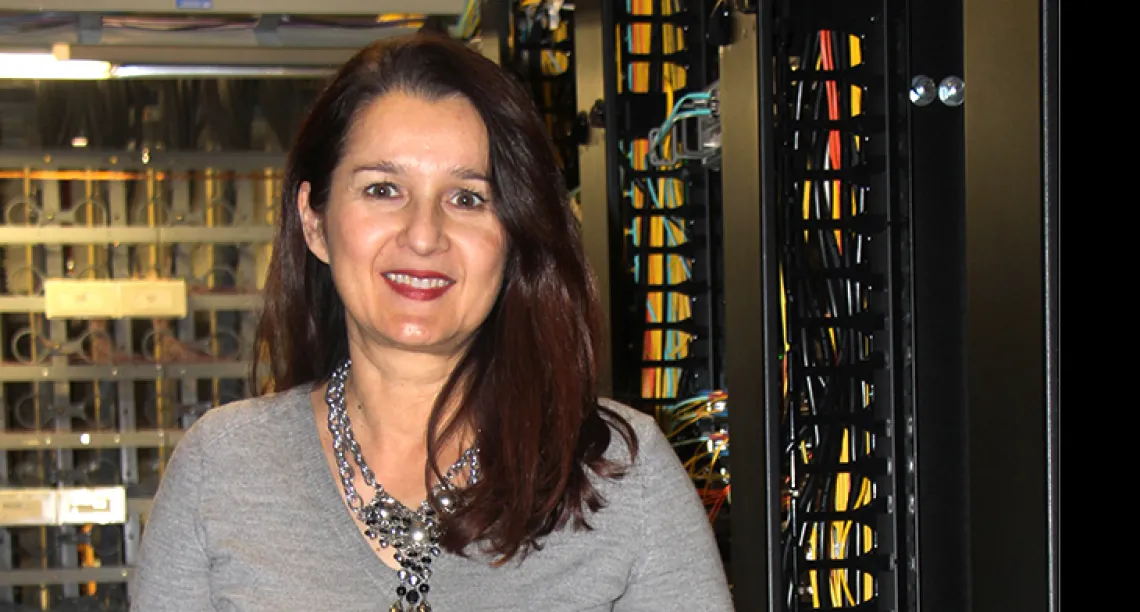UA Network Upgrade Supports Faster Research, More Devices

Observing the universe. DNA databases. Millions of tweets. UA's researchers transfer massive data sets over the network.
Online lectures and textbooks. Social media. Music, games, TV, and video. UA students are increasingly connected to the network by phone and laptop throughout the day and night.
To meet these growing demands, the University of Arizona recently completed a state-of-the-art, $7 million project to upgrade the backbone of its data network.
The new and improved, feature-rich network will serve the university for years to come. Cisco System Design Architect Jerod Adkins explained, "The core upgrade greatly increases the speed and performance of the network while improving the overall security posture of the University of Arizona."
Adkins pointed out that the university network will see more and more demands, such as Internet of things (IoT) applications or Artificial Intelligence (think Amazon Echo or Google Home). He said with the network able to deliver highly secure and scalable solutions, "The University of Arizona has a great foundation to deliver on these needs as it continues to grow its reputation as a Top Tier Research Institution."
The two-year project, led by University Information Technology Services (UITS), increased the university's core network capacity from 10Gbs to 100Gbs. At 100Gbs, you can transfer the contents of a 1TB hard drive over the network in about a minute and a half.
"This was a massive project. It required careful planning and execution as well as a knowledgeable team of technical experts. And we had to conduct the work without interfering with university business operations," said Dragana Vasic, Assistant Director Communications Infrastructure Development, UITS.
Some of the considerations the team acted on include:
- Analyzing the electrical and mechanical design of campus buildings. The new equipment has increased power and cooling needs. To minimize facility renovation costs, the team relocated some equipment to newer buildings that already had optimal power and cooling.
- Consulting university business operations and the academic calendar. The team conducted work and planned network outages during off-peak times for the least impact to campus.
- Communicating and collaborating with the university community. The team worked closely with other IT professionals in departments and colleges to develop and share a schedule of planned "down-time." Part of the communication outreach during the upgrade process included informing researchers, faculty, business staff, and IT professionals about the need for the upgrade and resulting benefits.
Vasic highlighted UITS support of research, teaching and learning, administration, and healthcare. "With over 40,0000 students and 15,000 employees, UITS makes sure the network infrastructure supports a top-quality computing experience for the campus community."

